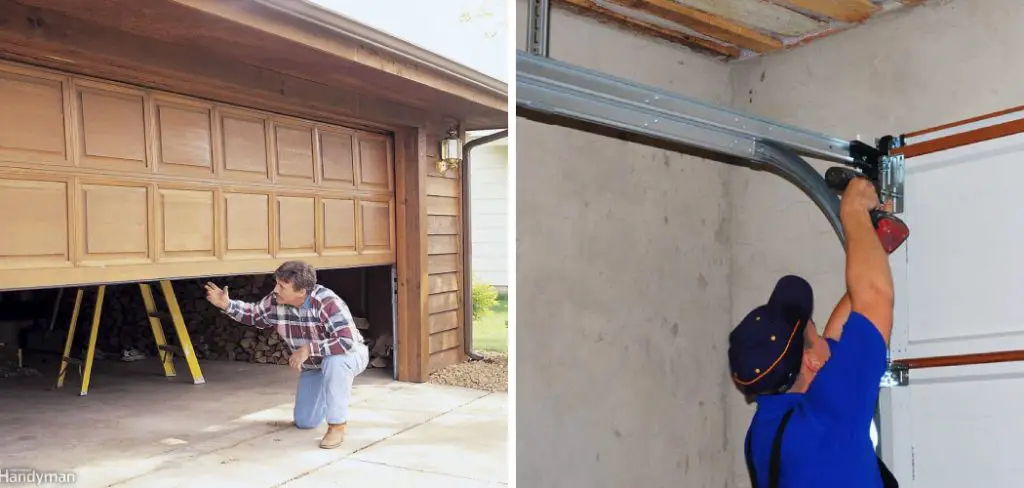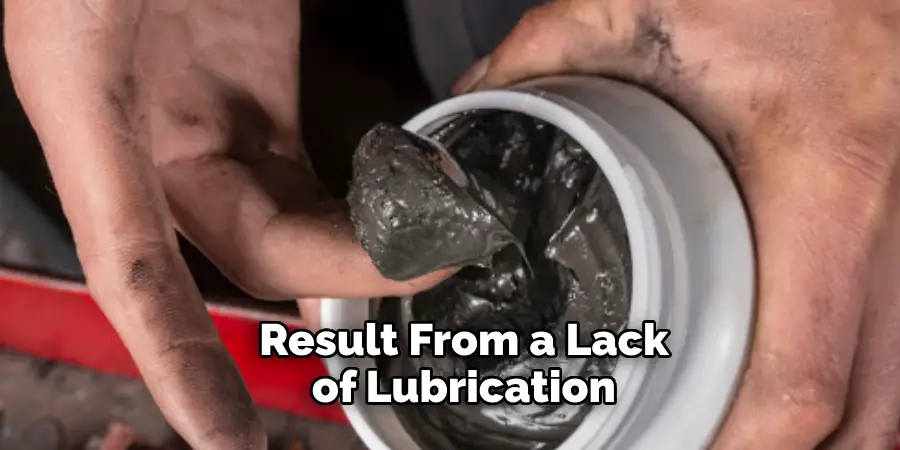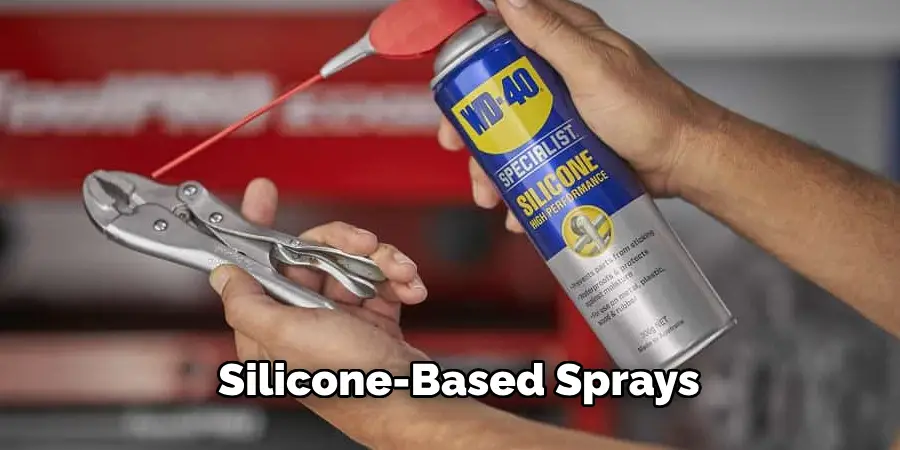Noisy garage doors can be a significant annoyance, disrupting the tranquility of your home and affecting the overall comfort of your living environment.

Understanding how to make garage door quieter is essential, not only for minimising disturbance but also for prolonging the lifespan of your garage door components.
A properly maintained and quiet garage door operates more smoothly, reducing wear and tear on its various parts and saving you money on repairs and replacements in the long run.
This article provides a comprehensive overview of effective noise-reduction solutions for garage doors. We’ll explore essential steps such as lubricating moving parts, tightening loose hardware, and upgrading to quieter components. Following these guidelines can significantly reduce noise and enjoy a more peaceful and functional garage door system.
Identifying the Source of Noise
Common Noise Sources
Understanding the various components of a garage door system that can produce noise is crucial for effective noise reduction.
Key sources of noise include the rollers, hinges, springs, and the garage door opener itself. Each of these parts, when not functioning optimally, can contribute to unwanted sounds, making it essential to identify the specific source of the noise for proper resolution.
Types of Noises and Their Causes

Different types of noises can indicate various issues within the garage door system. Squeaking sounds often result from a lack of lubrication on moving parts like hinges and rollers, while grinding noises may suggest that components are worn out and require replacement.
Banging or rattling noises could indicate loose hardware that needs tightening. By paying attention to these noises, homeowners can diagnose problems early and take appropriate measures to reduce the noise effectively.
How to Make Garage Door Quieter: Lubricating Moving Parts
Importance of Lubrication
Regular lubrication is crucial for reducing noise and ensuring the smooth operation of garage door components. Properly lubricated parts can minimize friction, which not only diminishes sound during operation but also extends the lifespan of the door system.

Silicone-based sprays are highly recommended, as they provide effective lubrication without attracting dirt and debris, unlike oil-based solutions. This maintenance step should be performed regularly to keep your garage door functioning quietly and efficiently.
Lubricating Hinges, Rollers, and Tracks
To effectively lubricate hinges, rollers, and tracks, clean the surfaces with a cloth to remove dust and grime. Next, apply a silicone-based lubricant directly to the hinges and the moving parts of the rollers. A light spray of lubricant along the interior will help for the tracks.
Be careful not to over-apply; excess lubricant can lead to buildup, which may attract dirt and cause further issues. Use a rag to wipe away any excess product. Ensuring that the lubricant reaches all moving parts and providing comprehensive coverage while avoiding any pooling that could hinder performance is essential.
Lubricating Springs and Chains
When lubricating springs and chains, it’s vital to follow safety precautions, especially since these components are often under high tension.

If your garage door features a chain drive, spray a small amount of silicone lubricant onto the chain, ensuring even coverage. A light application on the exposed areas for torsion springs will help prevent squeaking and grinding noises. Always ensure the door is safe when performing this maintenance to avoid potential hazards.
How to Make Garage Door Quieter: Tightening and Replacing Hardware
Tightening Loose Bolts and Screws
Inspecting the hardware of your garage door is an essential step in noise reduction. Over time, bolts, screws, and brackets can become loose due to regular use or shifts in temperature and humidity. To start, visually inspect all visible hardware, looking for any signs of loosening.
Use a socket wrench or screwdriver to tighten any loose bolts and screws firmly, ensuring they are secure but not over-tightened, which could damage the components.
Pay special attention to brackets that hold the door tracks in place, as loose hardware here can lead to rattling or banging noises during operation. Additionally, a periodic inspection every few months can help maintain a quieter and more stable garage door, keeping it operating smoothly and securely.
Replacing Worn-Out Parts
As garage door components age, wear and tear can lead to increased noise, making it crucial to replace any worn-out parts promptly. Rollers and hinges are particularly susceptible to degradation; when they become stiff or broken, they can create unwanted sounds during operation. Upgrading to quieter components can greatly enhance noise reduction.

For instance, nylon rollers are known for their durability and low noise level compared to their metal counterparts. Similarly, quiet hinges designed specifically for minimal sound can further contribute to a more peaceful environment. To replace these components, disconnect the garage door opener for safety and then support the door with clamps.
Remove the old roller or hinge by unscrewing it, and install the new one by aligning it correctly and securing it with screws. Ensuring that all components are in good condition will not only help reduce noise but also extend the life of your garage door system.
Upgrading to Quieter Components
Nylon Rollers vs. Metal Rollers

When considering noise reduction for your garage door, upgrading from metal to nylon rollers can be an effective choice. Nylon rollers are designed to glide smoothly along tracks, significantly reducing friction and noise.
Unlike their metal counterparts, which can rattle and produce grinding sounds, nylon rollers operate quietly, making them an ideal solution for homeowners seeking peace and tranquillity. When selecting nylon rollers, it’s essential to consult the manufacturer’s specifications to ensure compatibility with your garage door system. Look for high-quality options with sealed bearings that minimize noise and require less maintenance.
To replace your existing metal rollers, disconnect the garage door opener for safety and carefully remove the old rollers by unscrewing them from the tracks. Attach the new nylon rollers by aligning them properly and securing them tightly. With this upgrade, you will enjoy a smoother and quieter door operation.
Upgrading to a Belt-Drive Opener
If your garage door uses a chain-drive opener, consider upgrading to a belt-drive opener for a quieter experience.
Belt-drive systems operate with a reinforced rubber belt rather than a metal chain, eliminating metal-to-metal contact that produces noise. This smooth operation ensures a quieter performance and reduces wear on components over time. Belt-drive openers often feature advanced technology, such as soft start and stop mechanisms, minimizing noise during operation.
Additionally, many modern belt-drive systems come equipped with smart home integration, allowing for convenient access and monitoring. When making this upgrade, select a reputable brand and model that matches your garage door specifications, follow the manufacturer’s installation guidelines, or consult a professional for optimal results.
Insulating the Garage Door
Adding insulation to your garage door can effectively dampen sound and provide energy efficiency benefits.
Insulation helps to absorb sound waves, reducing noise transmission from the outside and provides stability during heavy winds and storms. Several types of insulation materials are available, including polystyrene, polyurethane, and reflective foil. Polystyrene is a cost-effective option and offers good thermal efficiency, while polyurethane provides higher insulation levels and is often used in more energy-efficient garage doors.
Reflective foil is ideal for hot climates, reflecting heat away from the garage. To insulate your garage door, measure each panel and cut the insulation material to fit snugly. This can be adhered to using appropriate adhesive or fasteners if required. Insulating your garage door contributes to a quieter environment and enhances energy efficiency, making it a worthwhile investment for any homeowner.
Adjusting the Garage Door Opener Settings
Softening the Close/Stop Settings
Adjusting the garage door opener’s settings can significantly reduce noise by ensuring that the door closes and stops softly.
Most modern openers have a control panel that allows you to modify these settings. By decreasing the force and speed at which the door closes, you can avoid the harsh thud associated with rapid closure. Refer to the manufacturer’s manual for specific instructions on accessing and adjusting the close and stop settings for a more gentle operation.
Reducing Opener Vibration
To further quiet your garage door system, it is beneficial to reduce the vibrations produced by the opener. One effective method is to install rubber pads between the opener and its mounting surface, which can effectively absorb vibrations.
Additionally, ensure that the opener is securely mounted to the ceiling, as loose fittings can amplify noise. These adjustments contribute to a quieter operation and prolong the lifespan of your garage door opener by minimizing unnecessary stress on its components.
Adding Noise Dampening Materials
Using Rubber Insulation Strips
Rubber insulation strips are an excellent addition to reducing garage door system noise. These strips can be installed along the tracks, hinges, and other metal parts where vibrations often occur. By absorbing the vibrations generated during the door’s operation, they significantly dampen sound. For maximum effectiveness, place the strips at contact points—where the metal parts meet or where movement occurs—to create a barrier that minimizes noise transfer. Ensure that the strips are secured tightly to prevent slipping during operation.
Installing Anti-Vibration Pads
Another effective way to reduce noise is to place anti-vibration pads under the garage door opener and other key components. These pads are designed to absorb vibrations and prevent them from transmitting through the floor and into the surroundings.
When choosing pads, look for those made from dense rubber or neoprene for optimal performance. To install, simply slide the pads underneath the opener and any other noisy components, ensuring they are positioned securely. This small modification can lead to a noticeable reduction in operational noise.
Regular Maintenance to Keep Noise Levels Down
Ongoing maintenance is essential for keeping your garage door system operating quietly and efficiently. Regular inspections and tune-ups can help identify and resolve potential issues before they escalate and result in increased noise levels.
Every few months, check the hardware for signs of wear or looseness, paying close attention to the rollers, hinges, and tracks. Tightening any loose screws or bolts can prevent rattling, while cleaning the tracks and hardware can minimize friction and noise.
Routine Inspections and Tune-Ups
Make it a habit to conduct routine inspections of your garage door components.
Look for frayed cables, worn rollers, and buildup in the tracks. Ensure that all moving parts are lubricated with a silicone-based lubricant to facilitate smooth operation. Keeping these components in good condition will reduce noise and prolong the life of your garage door system.
Scheduling Professional Maintenance
In addition to your regular inspections, consider scheduling professional maintenance at least once a year.
A qualified technician can expertly adjust and lubricate all components, ensuring everything functions correctly. Professional tune-ups can help maintain quieter operations over time, as technicians can identify subtle issues that may be missed during routine checks. By investing in professional care, you ensure your system remains in optimal condition for years to come.
Conclusion
Reducing noise from your garage door is achievable through several effective steps. First, ensure that regular lubrication of moving parts is prioritized to minimize friction and wear.
Upgrading components, such as replacing worn rollers or investing in a quieter door opener, can greatly enhance performance. Additionally, adding noise-dampening materials, such as rubber insulation strips and anti-vibration pads, is key in further reducing sound transmission. To maintain these improvements, commit to routine inspections and schedule professional maintenance at least once a year. Remember, learning how to make garage door quieter is within your reach, and with consistent effort, you can achieve a more serene environment.
By implementing these simple upgrades and practices, you will experience a noticeable reduction in noise levels and extend the longevity of your garage door system, making for a comfortable and efficient space.
I am Rick. I grew up helping my dad with his handyman service. I learned a lot from him about how to fix things, and also about how to work hard and take care of business. These days, I’m still into fixing things- only now, I’m doing it for a living.
I’m always looking for new ways to help people grow and develop. That’s why I have created this blog to share all my experience and knowledge so
that I can help people who are interested in DIY repair.

